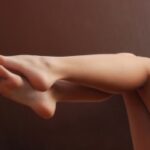Spider veins are small red, purple or blue veins that generally are easily seen through the skin. They are most often found on the legs and face and may appear as fine lines or webbed or starburst patterns on the skin. Usually spider veins, while visible through the skin, cannot be felt when pressed.
Varicose veins are similar to spider veins but they are larger, often swollen, easily visible and usually palpable (that is they can be felt if pressed). Varicose veins bulge with pools of blood when the blood does not circulate properly. Varicose veins appear most often on the legs, although they can develop anywhere on the body.
The cause of spider veins and varicose veins is not certain, but many factors appear to play a role in some cases including the following.
1. Heredity
2. Working in an occupation, such as nursing, teaching, or as a beautician or hair stylist, that requires prolonged periods of standing
3. Obesity
4. Hormones such as those present during pregnancy, puberty and menopause
5. The use of birth control pills
6. Post-menopause hormone treatment
7. A history of blood clots
8. Trauma or injury to the skin
8. Age
9. A sedentary lifestyle
10. Conditions, such as trauma, constipation or the wearing of restrictive garments like girdles, that put pressure on the abdomen
Sometimes the only symptom of varicose veins and spider veins is their appearance, which can be cosmetically unacceptable to some sufferers but not uncomfortable or dangerous.
In other instances, the symptoms of spider veins and varicose veins include pain, most often aching and/or cramping in the legs, but at times including burning, throbbing, tingling or a feeling of heaviness in the legs. In addition, they can cause swelling, itching, and fatigue.
The symptoms of spider veins and varicose veins already described are bothersome and, in some cases, the pain can become intolerable, but they generally are not dangerous.
However, varicose veins occasionally can result in more serious symptoms including ulcers or large sores, inflammation of the veins (phlebitis) or blood clots (thrombophletis). Those with these symptoms should consult with a physician immediately because they may need to be treated aggressively.
Treatments for the symptoms of run-of-the mill spider veins and varicose veins include non-invasive steps such as wearing compression socks, elevating the legs while sitting or lying down, and avoiding standing for prolonged periods.
Spider vein treatments and varicose vein treatments for those who don’t get sufficient relief from these measures or who want to more aggressively address the appearance of spider veins and varicose veins include sclerotherapy, which involves injecting liquid into the veins, laser therapy and surgery to remove or “strip” the veins.
Sources:
www.webmd.com, Varicose and Spider Veins
www.medicinenet.com, Phlebitis and Thrombophlebitis
www.medicinenet.com/varicose_veins, Varicose Veins and Spider Veins, Causes, Symptoms, Diagnosis and Treatment




